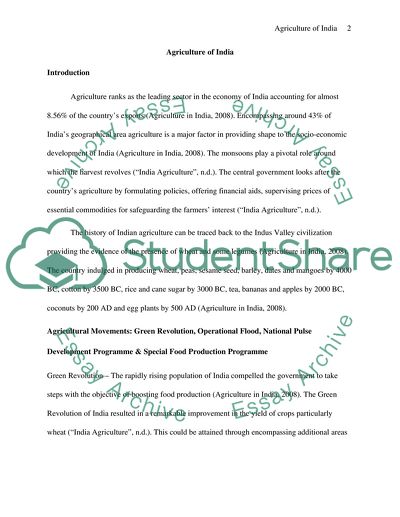Cite this document
(Agriculture of India Essay Example | Topics and Well Written Essays - 1500 words, n.d.)
Agriculture of India Essay Example | Topics and Well Written Essays - 1500 words. Retrieved from https://studentshare.org/geography/1712912-introduction-to-human-geography-essay
Agriculture of India Essay Example | Topics and Well Written Essays - 1500 words. Retrieved from https://studentshare.org/geography/1712912-introduction-to-human-geography-essay
(Agriculture of India Essay Example | Topics and Well Written Essays - 1500 Words)
Agriculture of India Essay Example | Topics and Well Written Essays - 1500 Words. https://studentshare.org/geography/1712912-introduction-to-human-geography-essay.
Agriculture of India Essay Example | Topics and Well Written Essays - 1500 Words. https://studentshare.org/geography/1712912-introduction-to-human-geography-essay.
“Agriculture of India Essay Example | Topics and Well Written Essays - 1500 Words”, n.d. https://studentshare.org/geography/1712912-introduction-to-human-geography-essay.


